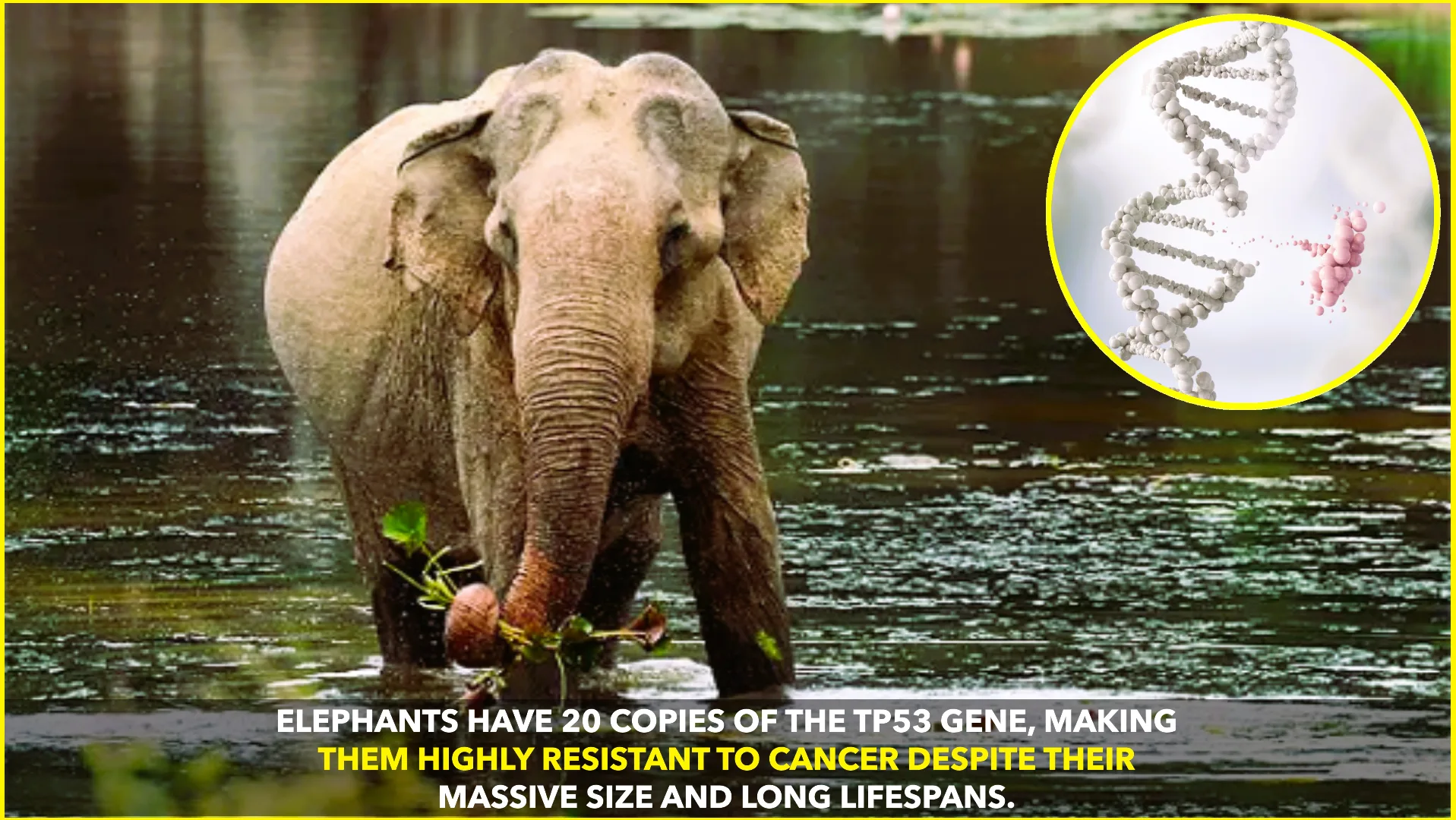Elephants and Their Remarkable Cancer Resistance
When it comes to cancer risk, size and lifespan usually play a major role. Larger animals with longer lifespans should theoretically face higher chances of developing cancer because their bodies undergo more cell divisions over time. More cells mean more opportunities for DNA damage and mutations, which could lead to cancer. Yet elephants, some of the largest and longest-living land mammals, rarely develop this disease.
This medical mystery has fascinated scientists for decades and is often referred to as “Peto’s Paradox.” Named after epidemiologist Richard Peto, the paradox highlights why bigger animals don’t necessarily have higher cancer rates than smaller ones, even though they should. Elephants are perhaps the most striking example, and research has finally uncovered the genetic key to their extraordinary resistance: the TP53 gene.
The Role of the TP53 Gene
In humans, we have just a single copy of the TP53 gene. This gene plays a crucial role in protecting our bodies from cancer. It creates the p53 protein, often called the “guardian of the genome,” because of its ability to detect DNA damage. Whenever a cell’s DNA suffers harm, the p53 protein steps in to either repair the damage or, if it’s beyond repair, trigger apoptosis—programmed cell death. This process prevents defective cells from becoming cancerous.
For humans, having one functional TP53 gene is vital, but it also leaves us vulnerable. If the single gene mutates, as often happens in many cancers, the body loses a key defense mechanism against tumor growth.
Elephants, on the other hand, have an evolutionary advantage. Their genomes contain not just one, but around 20 copies of the TP53 gene. This means they produce far more p53 protein than humans, giving them a superior system for detecting and eliminating damaged cells.
How Elephants’ DNA Defends Them
The abundance of TP53 genes makes elephants exceptionally efficient at cancer prevention. When DNA damage occurs, elephants’ cells respond much more aggressively than human cells. Instead of trying too hard to fix broken DNA—which might allow mistakes to slip through—elephant cells quickly decide to self-destruct if repair isn’t possible.
This strict cellular policing helps elephants avoid the accumulation of harmful mutations. Even though their bodies contain about 100 times more cells than humans and they can live for up to 70 years, their cancer rates are surprisingly low.
Lessons for Human Medicine
Understanding how elephants resist cancer is more than just scientific curiosity—it could transform human medicine. If researchers can mimic or enhance the function of TP53 in people, it may open new doors for cancer prevention and treatment. Scientists are studying whether boosting TP53 activity could help human cells eliminate precancerous mutations more effectively, though the challenge is balancing this without harming healthy cells.
Some experts also believe that insights from elephants might inspire therapies that strengthen our natural cancer-fighting mechanisms. Imagine treatments that could “switch on” p53 pathways more efficiently or replicate the elephant’s built-in defense system.
Evolution’s Answer to Cancer
The evolution of elephants provides a fascinating example of how nature adapts to survival challenges. As elephants grew larger and lived longer over millions of years, their risk of cancer should have skyrocketed. But evolution solved the problem by multiplying the TP53 gene, giving them extra layers of protection.
This natural adaptation emphasizes the diversity of life’s solutions to common threats. While humans focus on medical innovations, elephants show that sometimes the answers are hidden in our genes.
Final Thoughts
The study of elephants’ cancer resistance is still ongoing, but the discoveries so far are promising. They remind us that nature’s designs often hold clues to solving our toughest medical problems. The next big breakthrough in cancer treatment might come from studying how these gentle giants keep their cells in check.
As scientists continue to unlock the secrets of the TP53 gene, elephants not only inspire awe for their size and intelligence but also for their hidden gift: a genetic shield against one of the world’s deadliest diseases.










